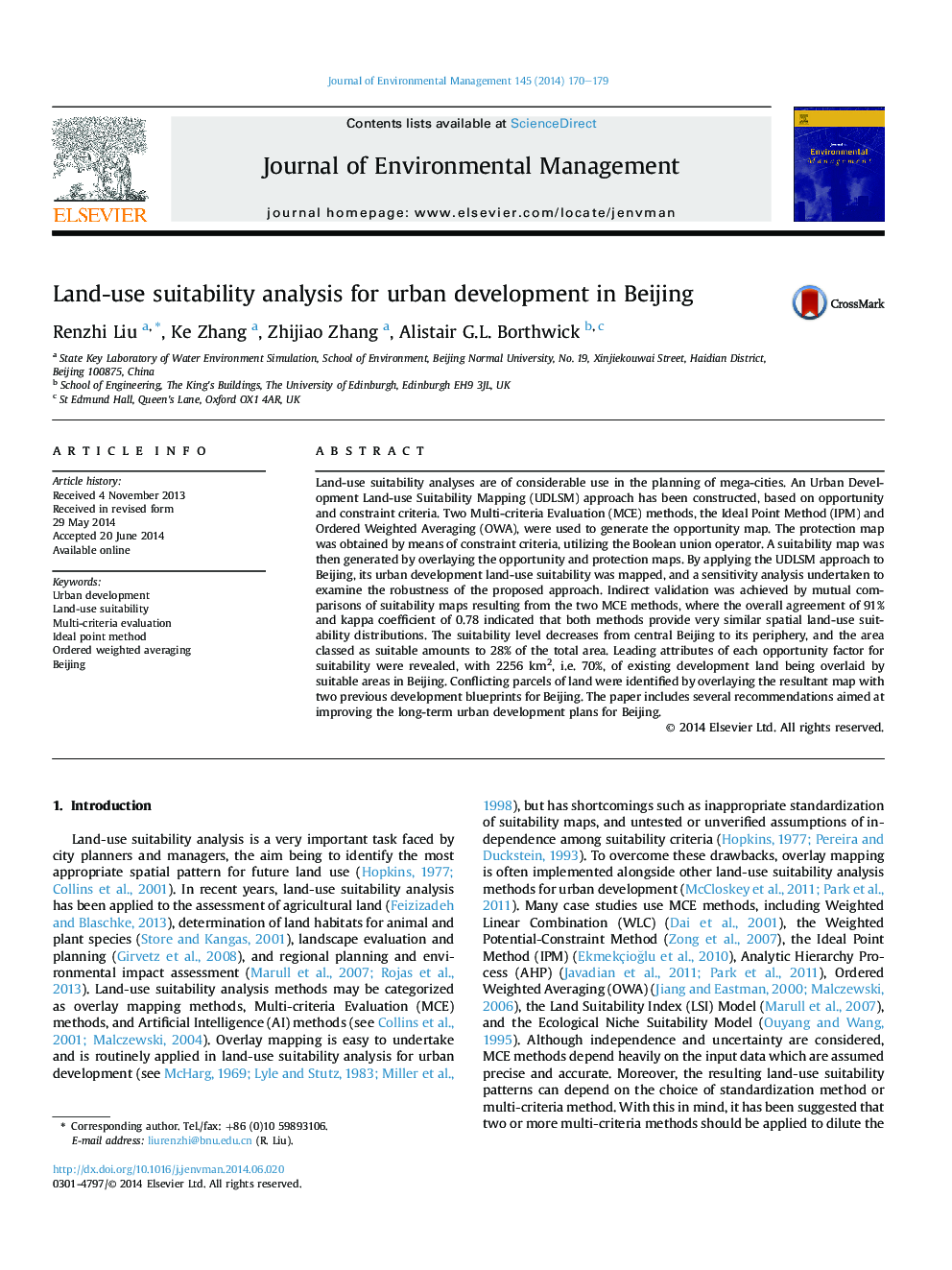| Article ID | Journal | Published Year | Pages | File Type |
|---|---|---|---|---|
| 7483489 | Journal of Environmental Management | 2014 | 10 Pages |
Abstract
Land-use suitability analyses are of considerable use in the planning of mega-cities. An Urban Development Land-use Suitability Mapping (UDLSM) approach has been constructed, based on opportunity and constraint criteria. Two Multi-criteria Evaluation (MCE) methods, the Ideal Point Method (IPM) and Ordered Weighted Averaging (OWA), were used to generate the opportunity map. The protection map was obtained by means of constraint criteria, utilizing the Boolean union operator. A suitability map was then generated by overlaying the opportunity and protection maps. By applying the UDLSM approach to Beijing, its urban development land-use suitability was mapped, and a sensitivity analysis undertaken to examine the robustness of the proposed approach. Indirect validation was achieved by mutual comparisons of suitability maps resulting from the two MCE methods, where the overall agreement of 91% and kappa coefficient of 0.78 indicated that both methods provide very similar spatial land-use suitability distributions. The suitability level decreases from central Beijing to its periphery, and the area classed as suitable amounts to 28% of the total area. Leading attributes of each opportunity factor for suitability were revealed, with 2256Â km2, i.e. 70%, of existing development land being overlaid by suitable areas in Beijing. Conflicting parcels of land were identified by overlaying the resultant map with two previous development blueprints for Beijing. The paper includes several recommendations aimed at improving the long-term urban development plans for Beijing.
Related Topics
Physical Sciences and Engineering
Energy
Renewable Energy, Sustainability and the Environment
Authors
Renzhi Liu, Ke Zhang, Zhijiao Zhang, Alistair G.L. Borthwick,
